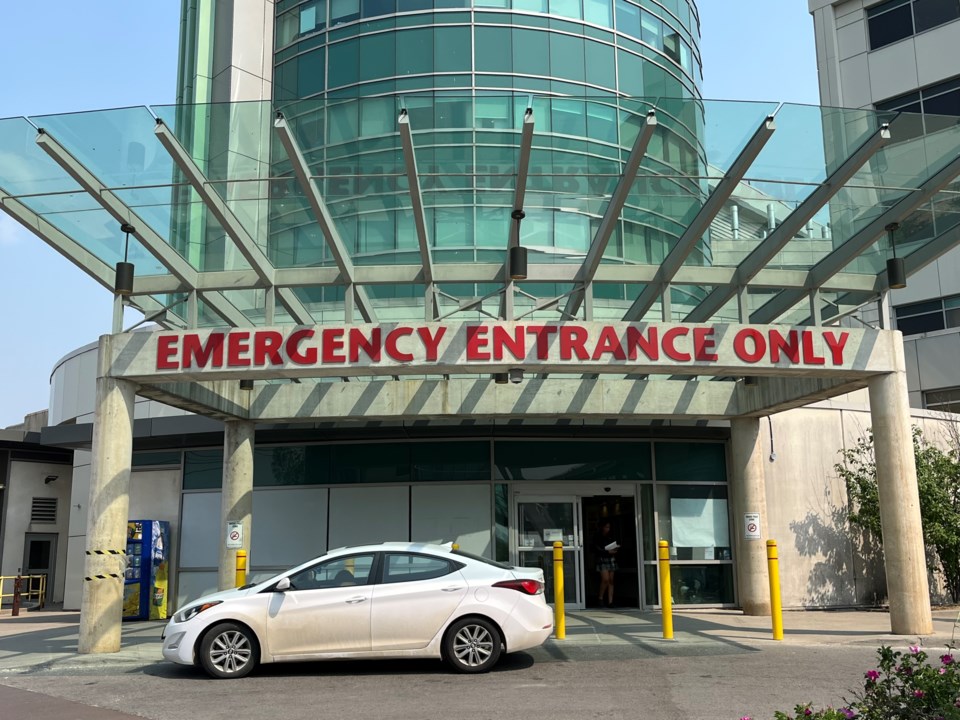Southlake Regional Health Centre president and CEO Dr. Paul Woods calls the $110-million investment from the province a game-changer for primary care and the Northern York South Simcoe Ontario Health Team.
The Ontario government announced the funding to help connect more than 300,000 people across the province to primary care.
Woods said this funding is critical with the communities Southlake serves being among the fastest growing and aging in Ontario, which makes Southlake one of the most overcrowded hospitals in the province — Southlake sees more than 115,000 visits annually to its emergency department.
“It’s critical that we strengthen the relationship among physicians, primary and social care providers in the community with hospitals to better serve patients in the most appropriate care setting to meet their needs,” he said.
The population served by the Northern York South Simcoe Ontario Health Team has exploded at nearly twice the rate of the provincial average, leaving more than 30,000 residents without access to primary care physicians, according to the Northern York South Simcoe Ontario Health Team.
“Today’s announcement will enhance accessibility, continuity, and quality of care by assembling a dedicated and interprofessional team of health-care professionals,” the Northern York South Simcoe Ontario Health Team said in a statement.
While Ontario currently leads the country with 90 per cent of people connected to a regular health-care provider, the province says the next step is to close the gap for the 1.3 million people not connected to primary care.
The new funding includes $90 million to add more than 400 new primary care providers as part of 78 new and expanded interprofessional primary care teams.
An additional $20 million will be going to existing interprofessional primary care teams to help them meet increased operational costs.
Interprofessional primary care teams connect people to a range of health professionals that work together under one roof and timely access to primary care helps people stay healthier for longer with faster diagnosis and treatment, according to a government news release.
According to the Ministry of Health’s modelling, this funding, as well as previous funding to expand medical school spots and to bring internationally trained doctors to Ontario, will help connect up to 98 per cent of people in the province to primary care in the next several years.
Ontario Medical Association president Dr. Andrew Park welcomed the funding, saying family doctors are the foundation of the health-care system.
"Every Ontarian, no matter where they live, should have access to a doctor and a well-co-ordinated health-care team supporting them when and where they need it. This is an important step toward that goal," Park said.
However, the Ontario Medical Association section on general and family practice issued a statement saying said that while any increase in funding that will help Ontarians get access to care is welcome, it is a feeble attempt to address the crisis in family medicine gripping Ontario.
“It is hard not to be disappointed by this announcement given its sheer inadequacy,” says Dr. David Barber, chair of the Ontario Medical Association section on general and family practice. “Family doctors have been shouting from the rooftops for months that we need real change in the system in order to make sure it doesn’t collapse."
According to the Ontario Medical Association, 2.3 million Ontarians were without a family doctor at last count and a majority of family doctors report that they are considering leaving the profession due to the unmanageable nature of running a practice in the current landscape.
Barber said that this funding is just another small Band-Aid solution that doesn’t do anything to get to the root of the problem.
"Family doctors need to be at the centre of health teams and must be invited to partner with government in developing solutions,” he said.
He added the announcement does not provide any confidence that the government understands how dire the situation is, and that the first step in addressing a crisis is to admit that it exists.
The funding is as useful as "an umbrella in a hurricane," he said.
“Ontario’s family doctors continue to call on the government to take a clear-eyed look at the dismal state of family medicine in Ontario and commit to finding the will and providing the resources to solve it,” the OMA section said in a news release. “This will not be done by taking small actions in the margins.”
Editor's Note, Feb. 5: This article has been update to include additional statements from the Ontario Medical Association president.



